Retirement Odyssey - Part 2
We were up early today, getting ready to meet Carla, our Rome guide, at the apartment at 8:30. She told us that we are staying in one of the oldest, most unchanged parts of the city. Our street name, Via In Selci, refers to the large Roman paving stones. There are 2 active monasteries in our block.
We spent 5 solid hours of educational time with Carla. We walked through the remains of Trajan's bath complex then Nero's "house", which covered 3 of the 7 seven hills of Rome, on our way to the church of San Clemente. This church is unique among the many churches of Rome in that it displays vertically 4 different epochs in time. Lower most are the ashes and burned remains of Nero's Rome. Next, there is a building currently suspected of being the Roman mint in the 2nd century. This level also includes a narrow alleyway and a Mithras temple. The 3rd level is a 4th century Christian basilica that contains the relics of St Cyril (who along with St Methodius created the Cyrillic alphabet) and is therefore a Russian pilgrimage site. The uppermost level at current street level is a 12th century basilica, still in use. Unfortunately , the beautiful 12th century mosaics were obscured by scaffolding.
Our next stop was the Colosseum, the only Roman amphitheater which bears that name (the name derives from the word colossal). It's the biggest, but not the first. That honor goes to ...... Pompeii!
Our journey with Carla finished up with a long explorations of Palatine Hill, the Forum and the numerous other ruins that are visible there today.
After some lunch and recuperation, we visited the church of Santa Prassede (8th century Byzantine mosaics) and The Church of Santa Maria Maggiore (5th and 15th century mosaics AND "remains of Jesus's cradle")
Dinner at Brocoletti. Buffalo mozzarella/tomatoes/basil/olive oil/balsamic vinegar ("just like home") and great homemade pasta.
Walked - 6.8 miles
stevenrdieterich
27 chapters
16 Apr 2020
A Long Walk In the Eternal City
Rome, Italy
We were up early today, getting ready to meet Carla, our Rome guide, at the apartment at 8:30. She told us that we are staying in one of the oldest, most unchanged parts of the city. Our street name, Via In Selci, refers to the large Roman paving stones. There are 2 active monasteries in our block.
We spent 5 solid hours of educational time with Carla. We walked through the remains of Trajan's bath complex then Nero's "house", which covered 3 of the 7 seven hills of Rome, on our way to the church of San Clemente. This church is unique among the many churches of Rome in that it displays vertically 4 different epochs in time. Lower most are the ashes and burned remains of Nero's Rome. Next, there is a building currently suspected of being the Roman mint in the 2nd century. This level also includes a narrow alleyway and a Mithras temple. The 3rd level is a 4th century Christian basilica that contains the relics of St Cyril (who along with St Methodius created the Cyrillic alphabet) and is therefore a Russian pilgrimage site. The uppermost level at current street level is a 12th century basilica, still in use. Unfortunately , the beautiful 12th century mosaics were obscured by scaffolding.
Our next stop was the Colosseum, the only Roman amphitheater which bears that name (the name derives from the word colossal). It's the biggest, but not the first. That honor goes to ...... Pompeii!
Our journey with Carla finished up with a long explorations of Palatine Hill, the Forum and the numerous other ruins that are visible there today.
After some lunch and recuperation, we visited the church of Santa Prassede (8th century Byzantine mosaics) and The Church of Santa Maria Maggiore (5th and 15th century mosaics AND "remains of Jesus's cradle")
Dinner at Brocoletti. Buffalo mozzarella/tomatoes/basil/olive oil/balsamic vinegar ("just like home") and great homemade pasta.
Walked - 6.8 miles
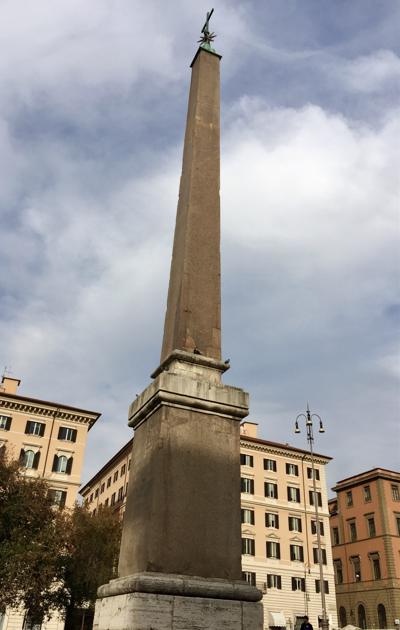
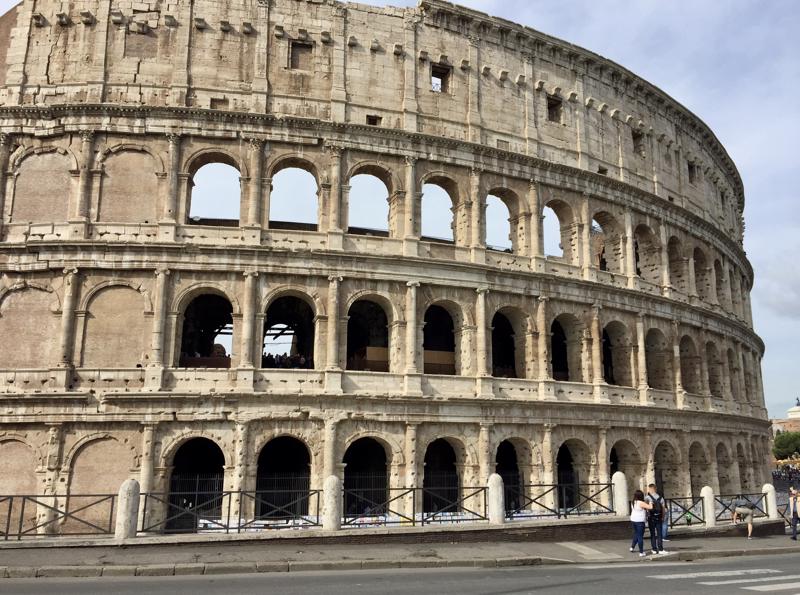
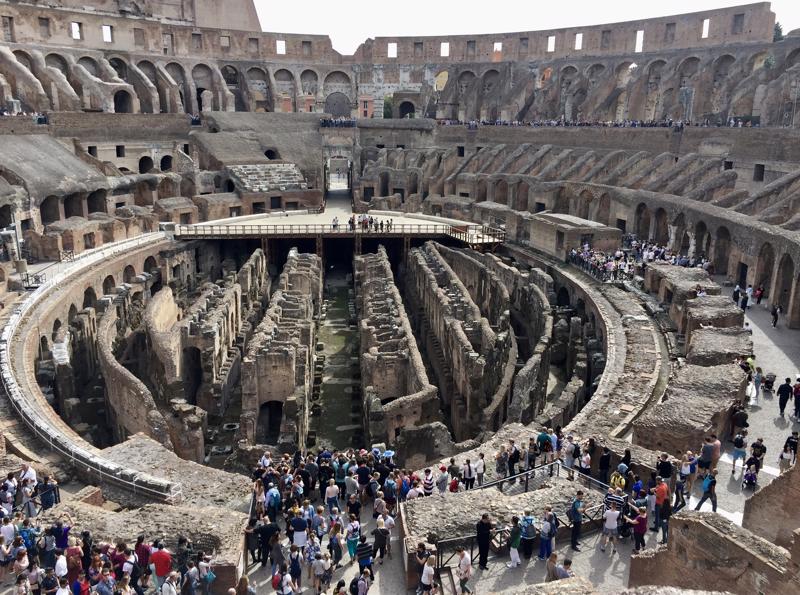
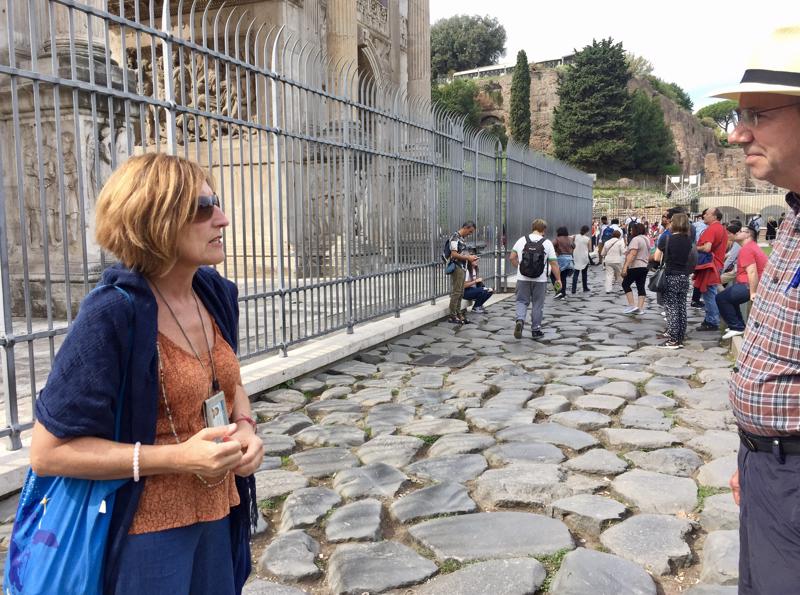
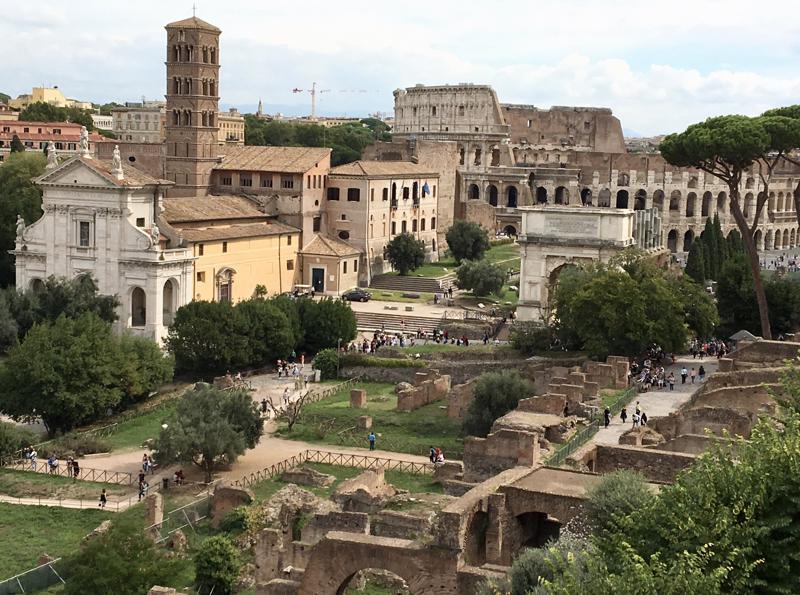
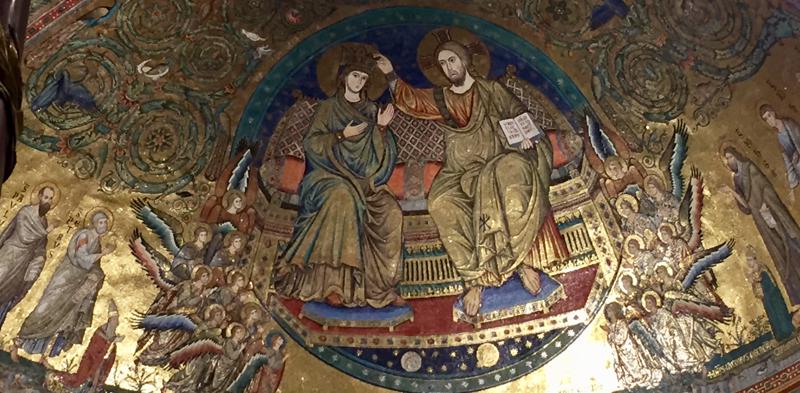
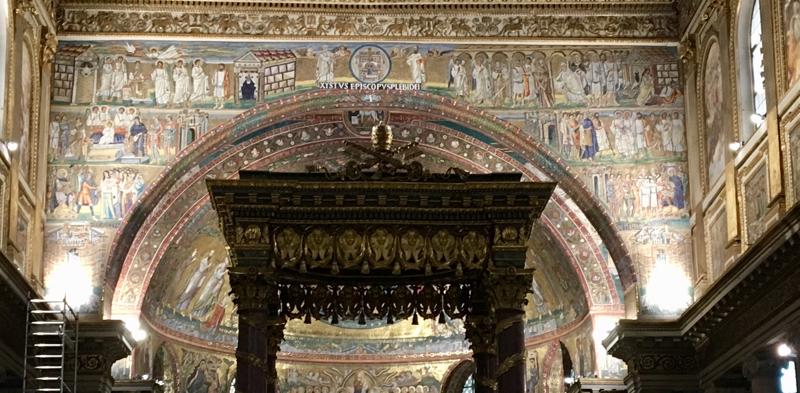
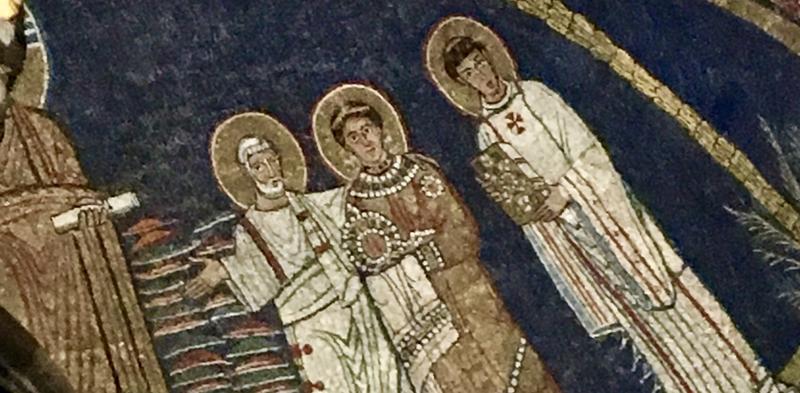
1.
Reach For the Sky
2.
Chien Mechant; Wash Day
3.
The Riviera; Last Stop in France
4.
Nice ..... 42 Years Later
5.
A Changeable Day in Monaco
6.
Another Lazy Sunday
7.
A Big Change of Scene
8.
A Long Walk In the Eternal City
9.
A Trip Back In Time
10.
Our Trip To the National Museum of Rome
11.
Metro Strike; Long Walk Through the Heart of Rome
12.
Smooth Transition; The Final Frontier
13.
Older Than the Ancient Greeks
14.
Getting To Know You
15.
Acropolis and Ancient Agora
16.
A Visit To the Oracle
17.
Over the Mountains, Across the Sea
18.
Dawn of the Olympics
19.
The Return of Summer; Our "Day Off"
20.
Mani Peninsula
21.
High and Low On the Rock
22.
A Mountainside of Churches
23.
Way Back Into Time
24.
The Healing Place & A Resting Place For Us
25.
Beach Boys Day Off
26.
Back To the Future
27.
Epilogue
Share your travel adventures like this!
Create your own travel blog in one step
Share with friends and family to follow your journey
Easy set up, no technical knowledge needed and unlimited storage!
© 2025 Travel Diaries. All rights reserved.